Abstract
1. It has been suggested that spontaneous quantal release of transmitter at the neuromuscular junction is a Poisson process. One logical argument against accepting the Poisson hypothesis is that so far relatively few intervals between miniature end-plate potentials (min.e.p.p.s) have been studied in any single experiment. Release is known to occur from many sites on the nerve terminal, so many intervals must be studied before drawing any conclusions about the timing of release from the individual sites. Moreover, the statistical methods that have been used are relatively insensitive to deviations from Poisson predictions.
2. The Poisson hypothesis is evaluated with respect to three major criteria:
(a) The fit to the exponential distribution is analysed by five goodness of fit tests which were applied to eleven sets of data, showing that it is unlikely that the data sets were generated by an exponential distribution.
(b) The independence of intervals is assessed in two ways. First, the autocorrelogram of intervals is constructed. This shows an excess of significant positive correlations beyond the 5% limits of the Poisson expectation. Secondly, the unsmoothed power spectrum is calculated, and compared to the Poisson prediction by means of the modified mean test. Again, most sets deviate significantly from the Poisson expectation. It is unlikely that the intervals are independent.
(c) The possibility of simultaneous occurrences is evaluated by construction of the amplitude histogram of min.e.p.p.s. In all sets the Poisson prediction for the frequency of multiples of the unit height was exceeded by the empirical data sets. The over-all conclusion is that the process which generates spontaneous releases is unlikely to be Poisson.
Full text
PDF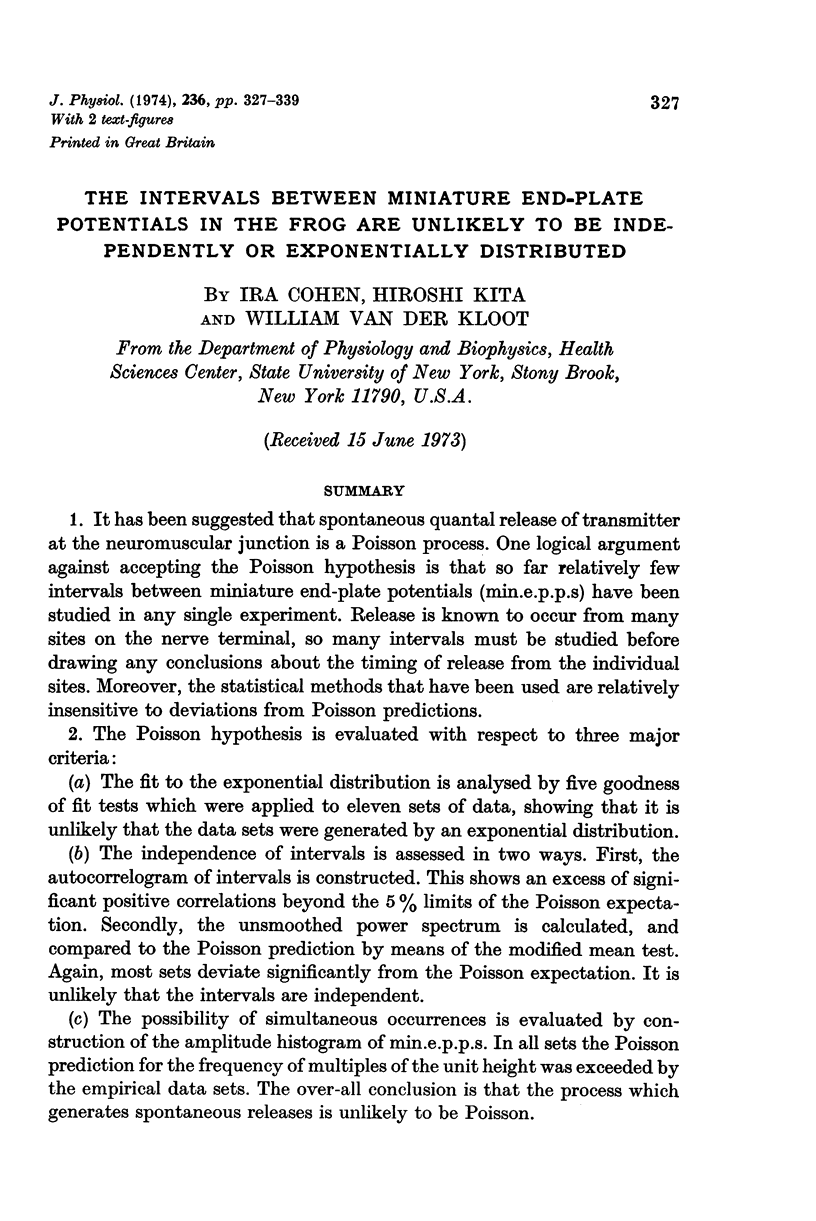
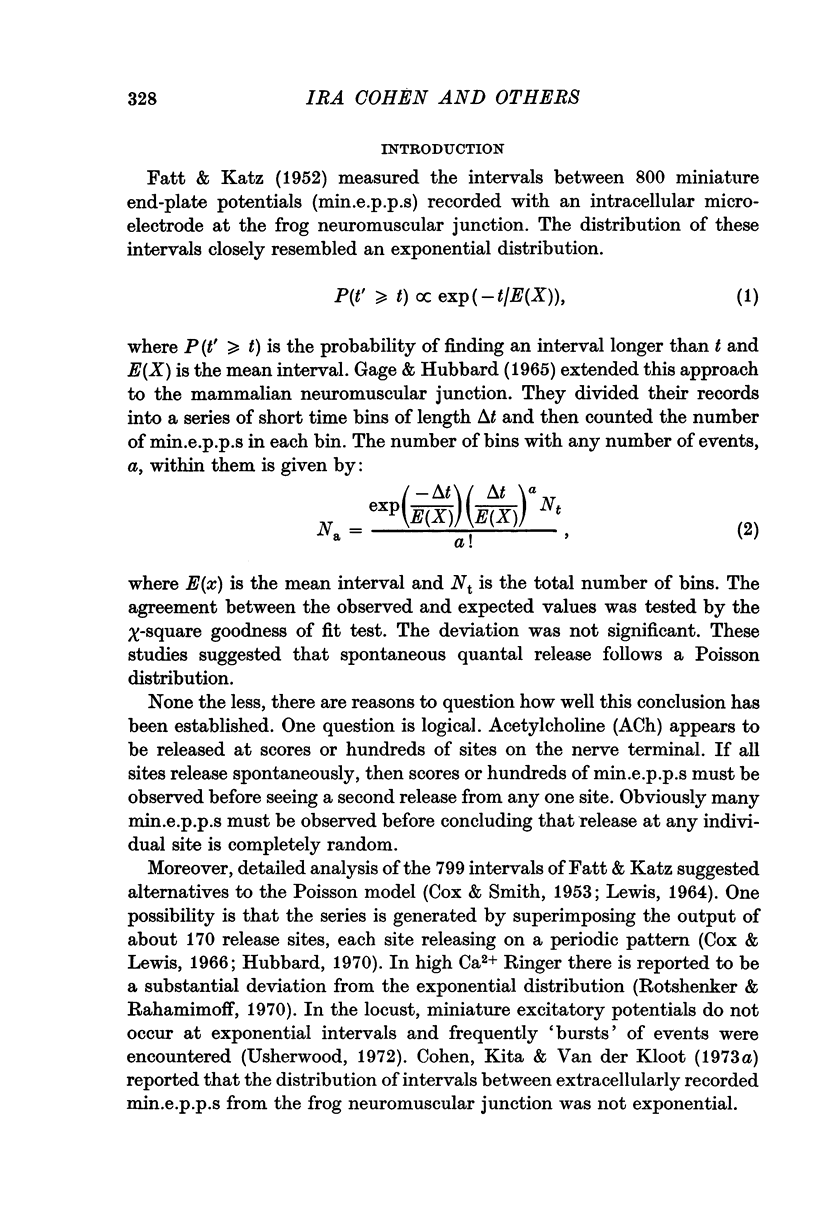
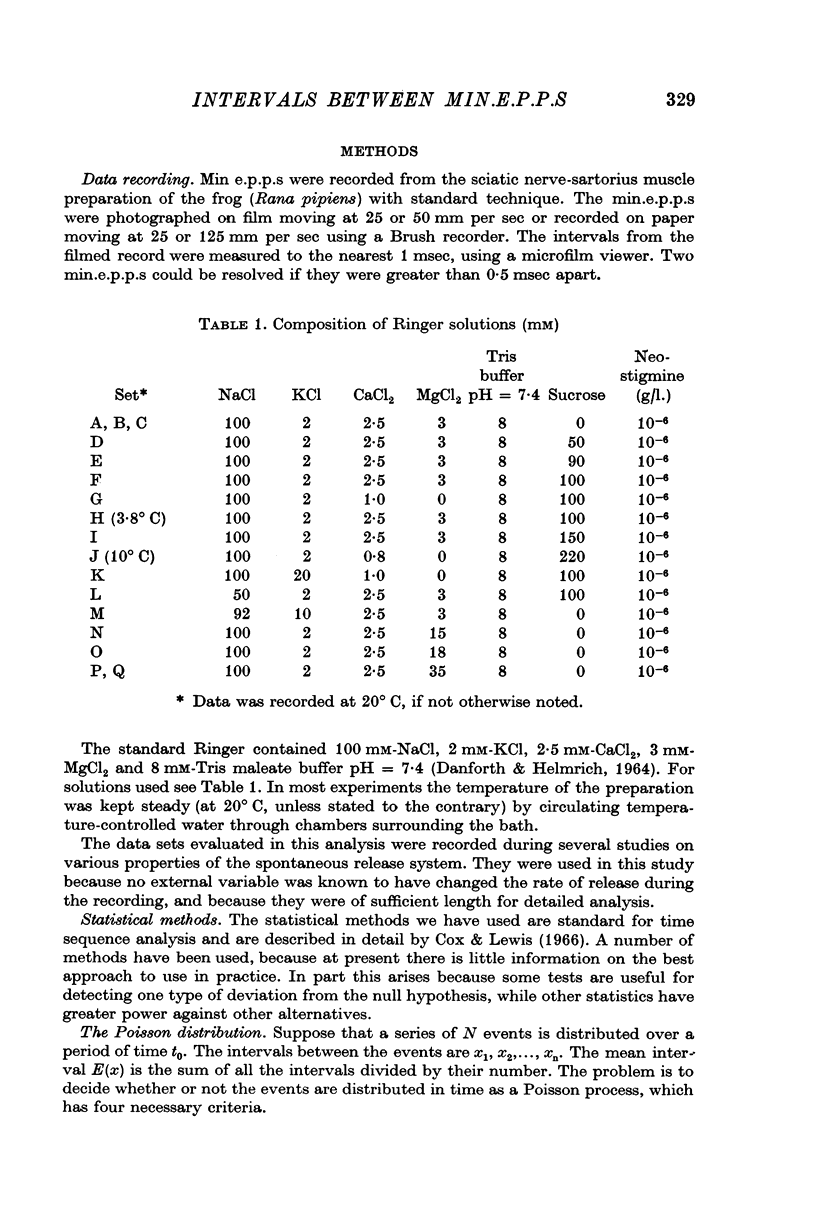
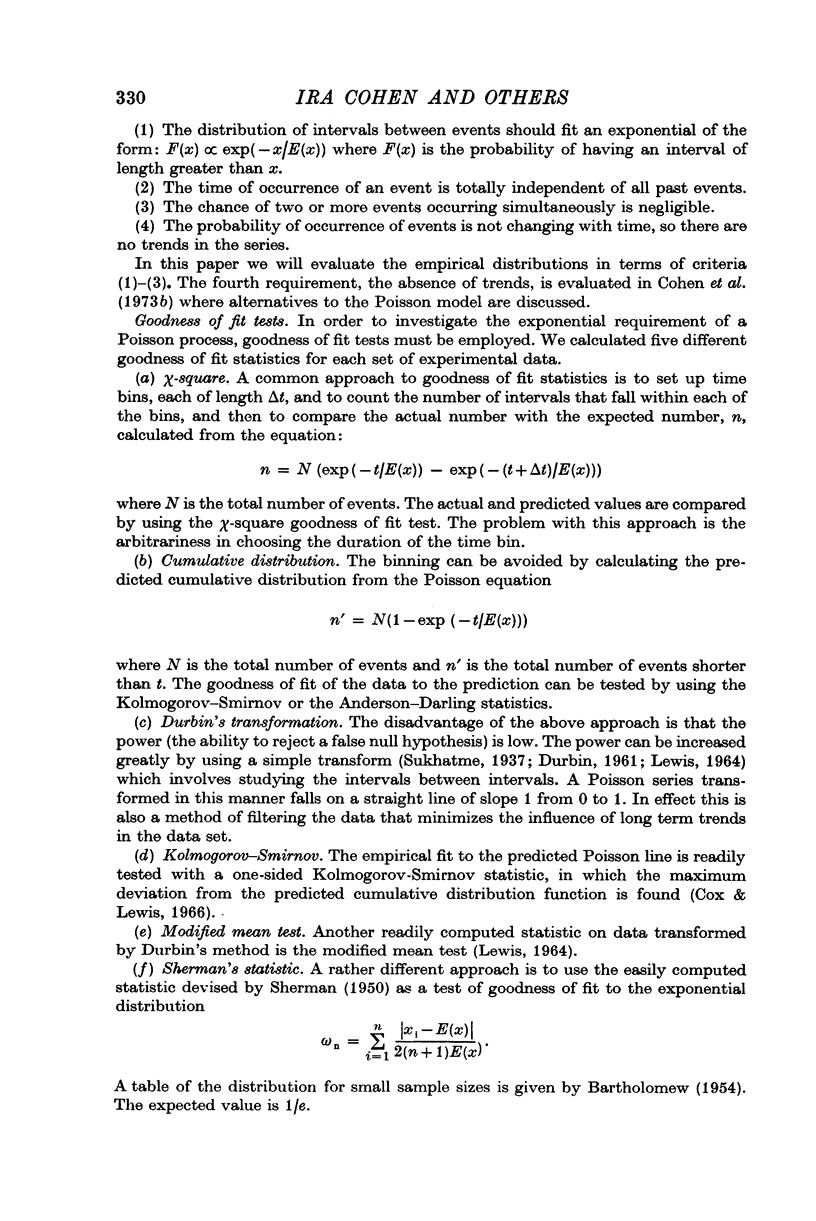
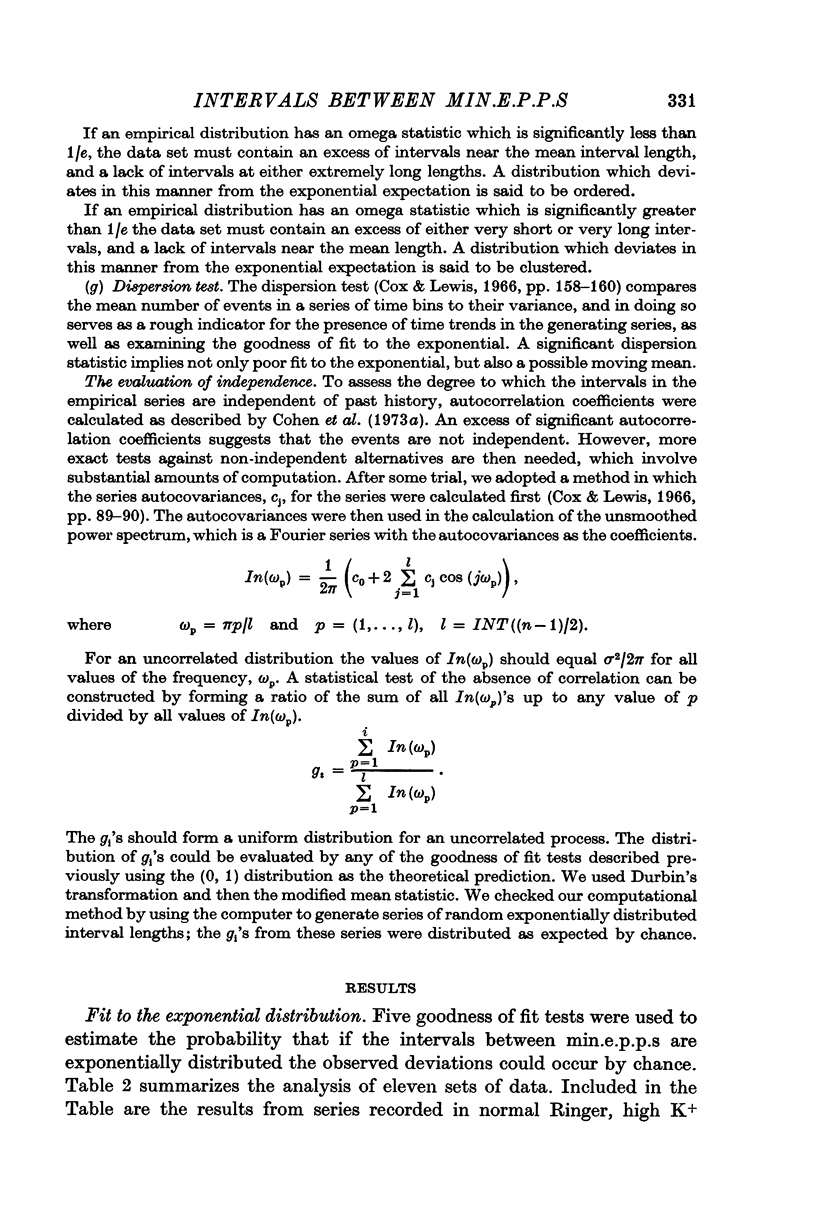
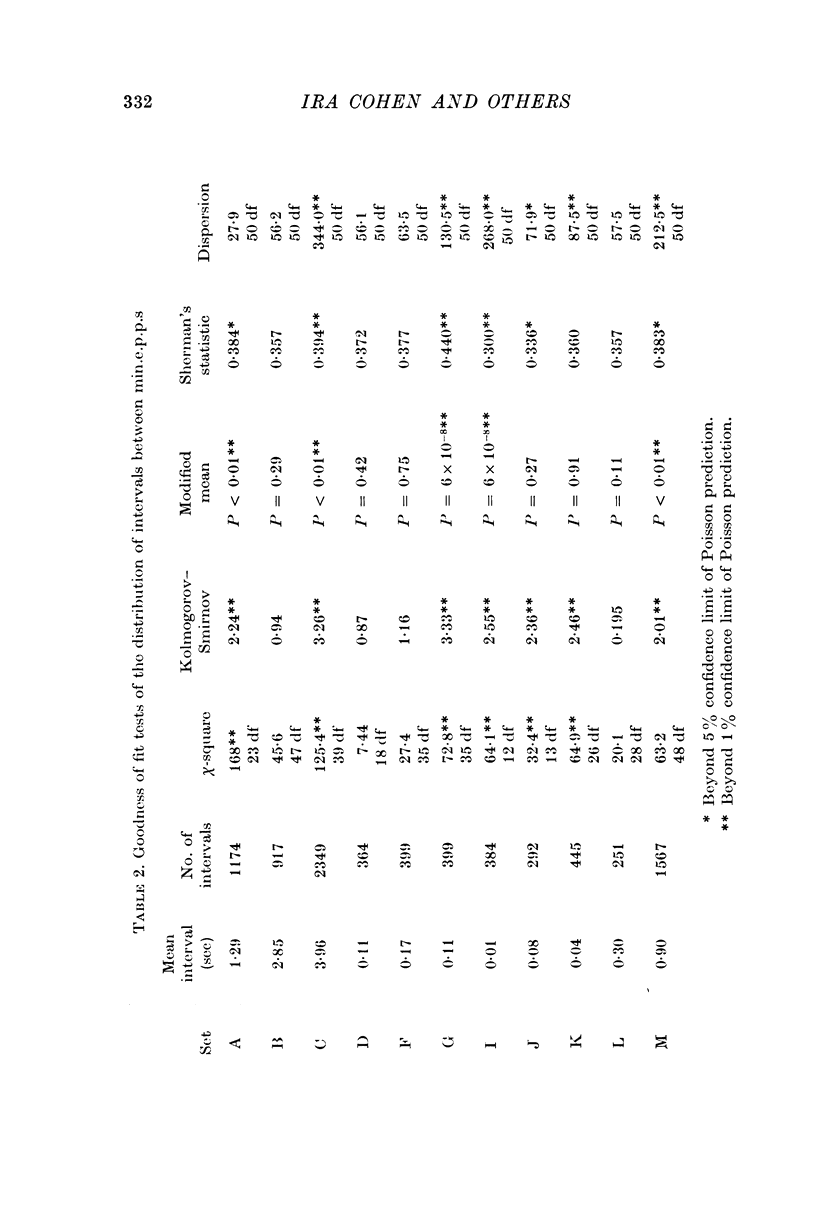
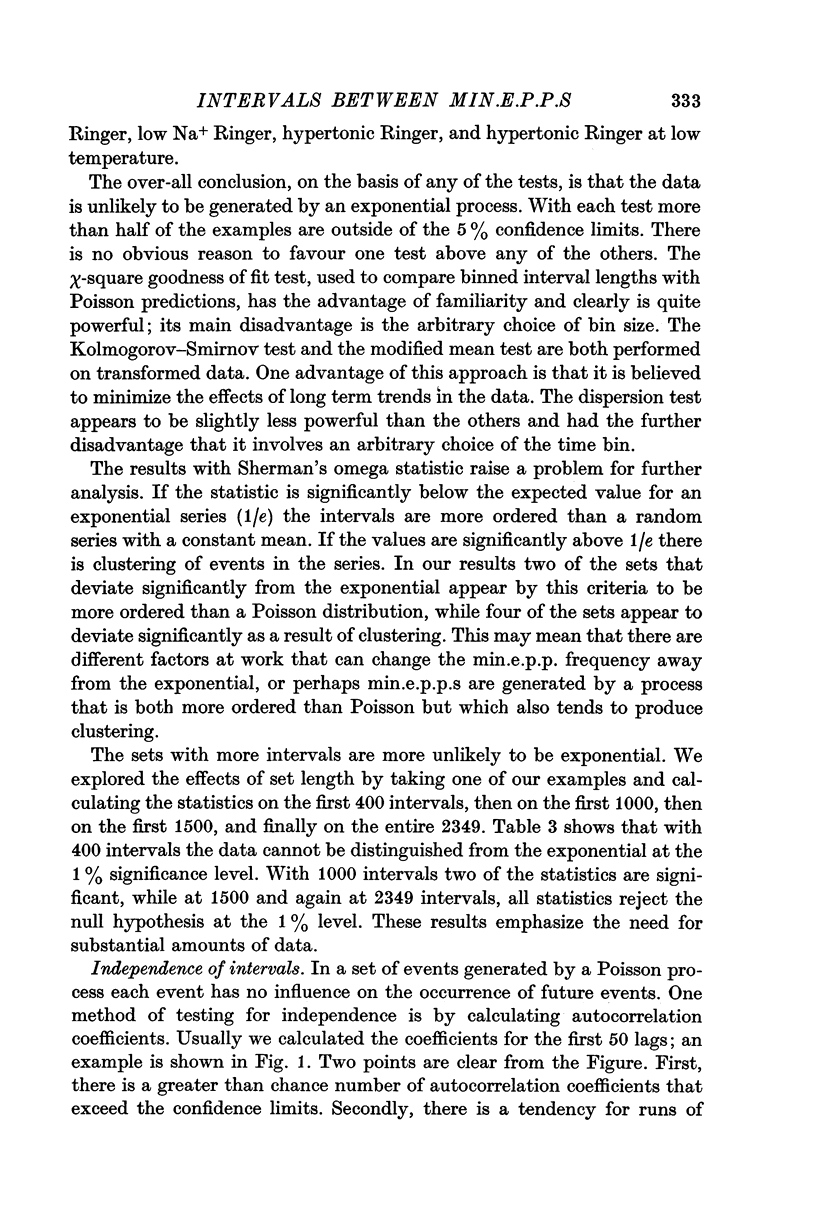
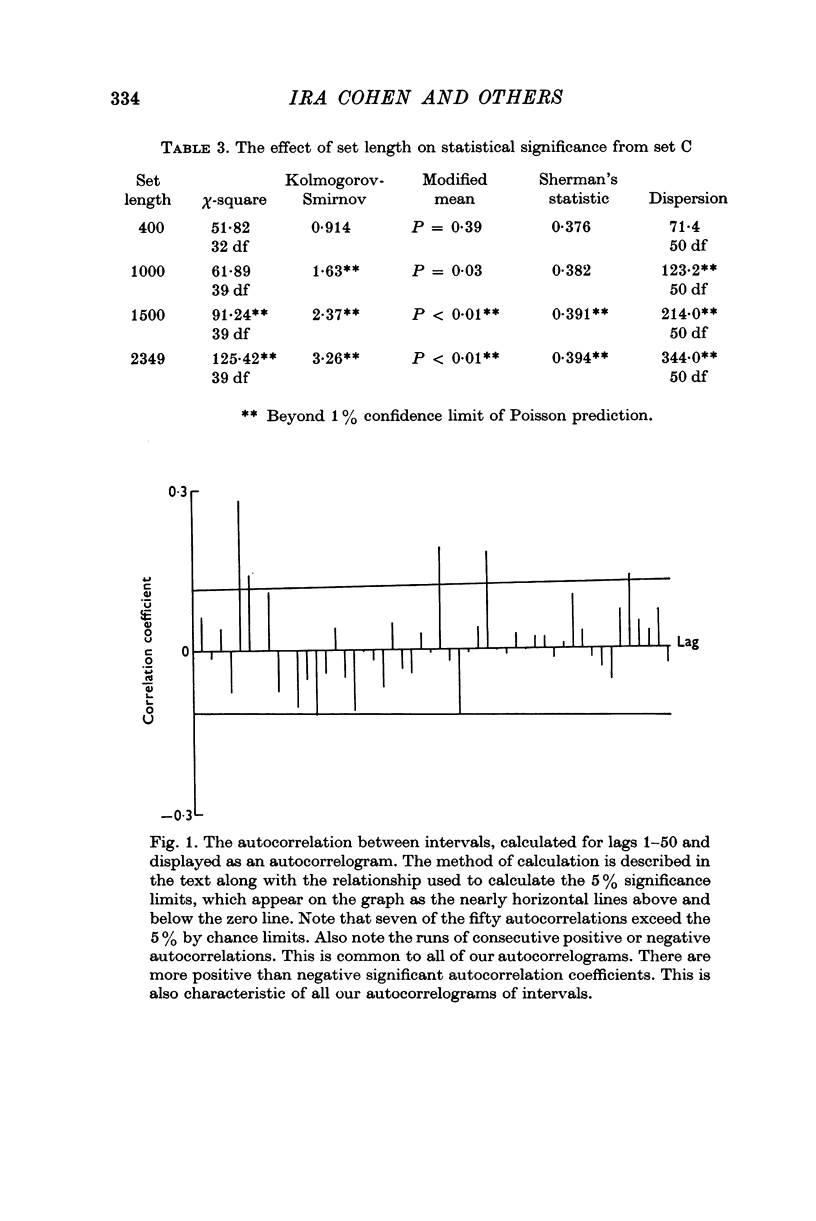
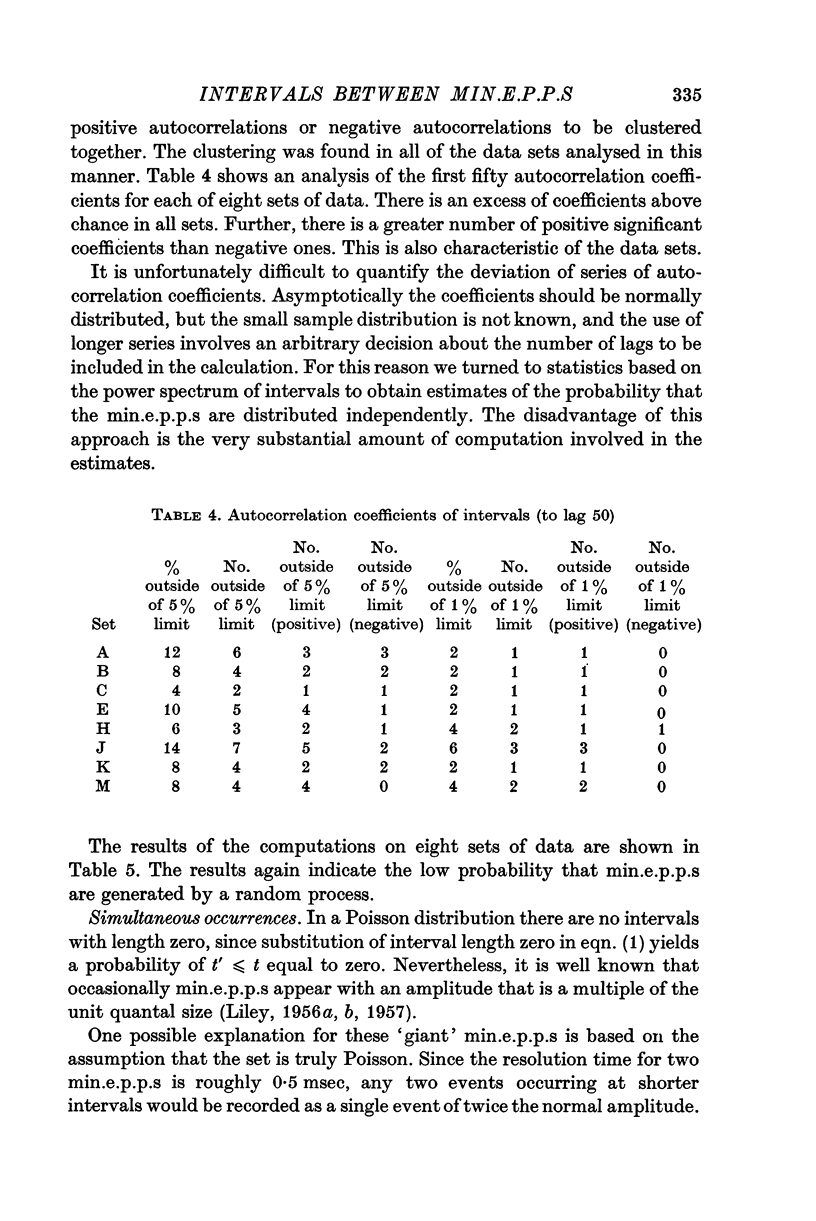
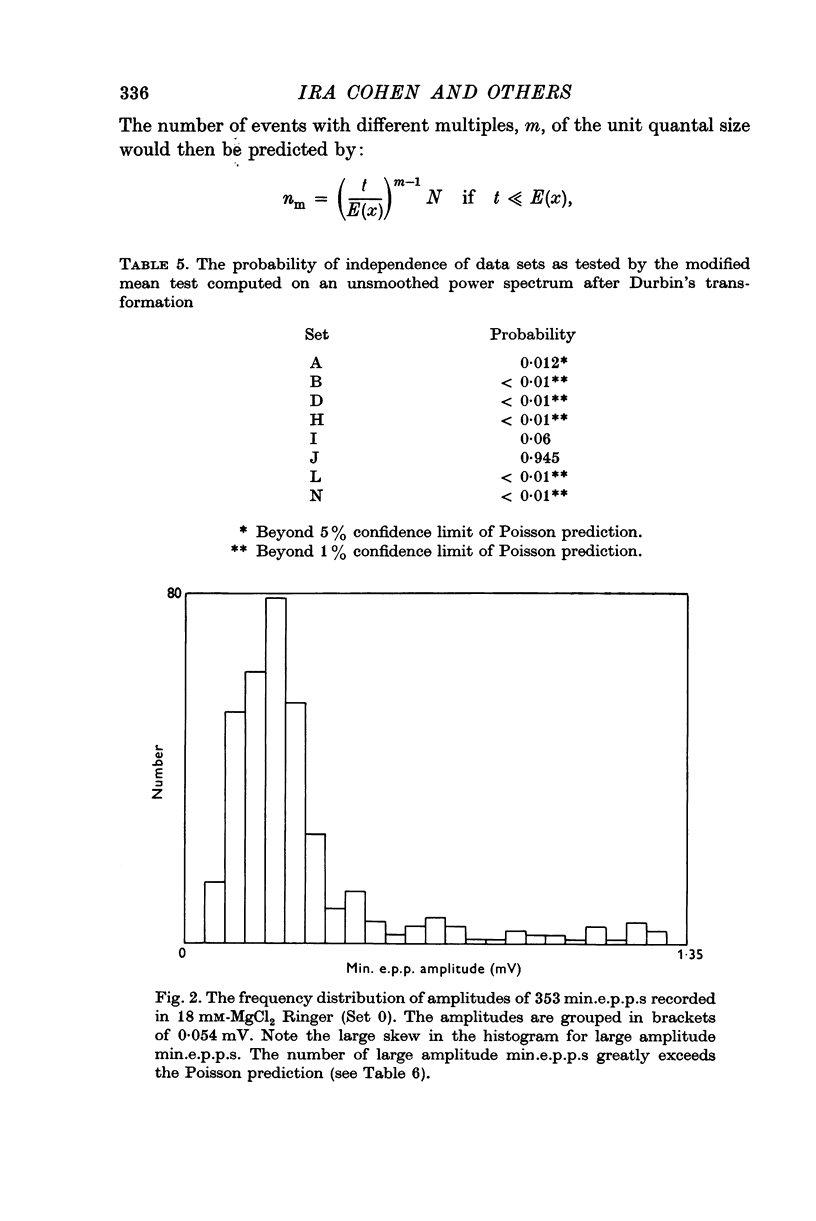
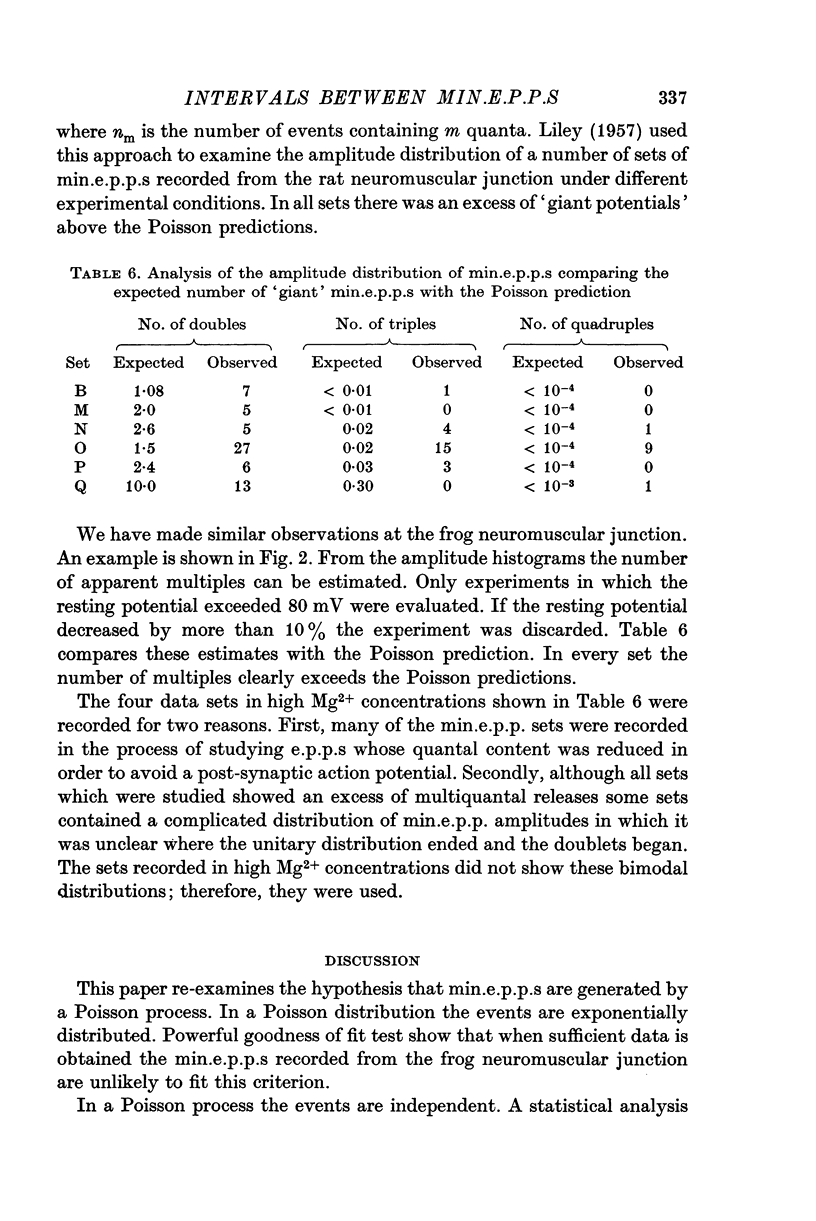
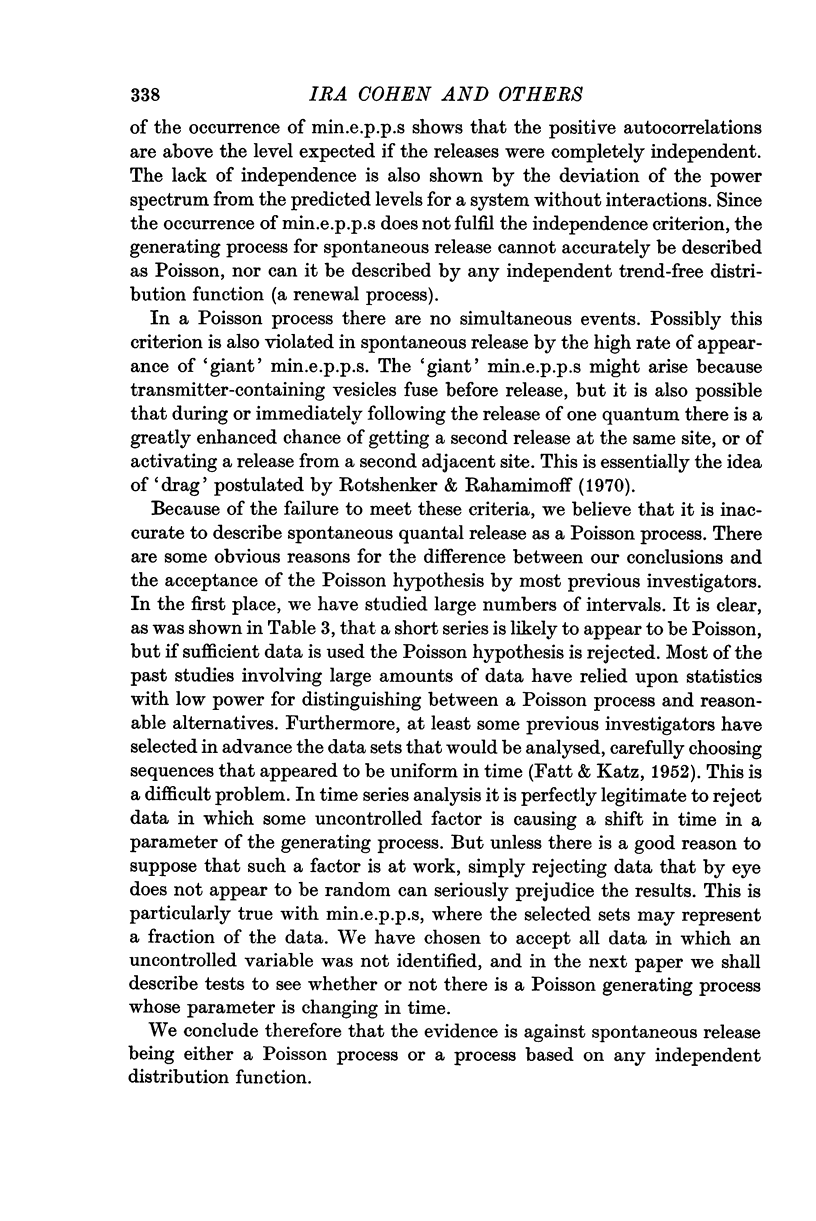
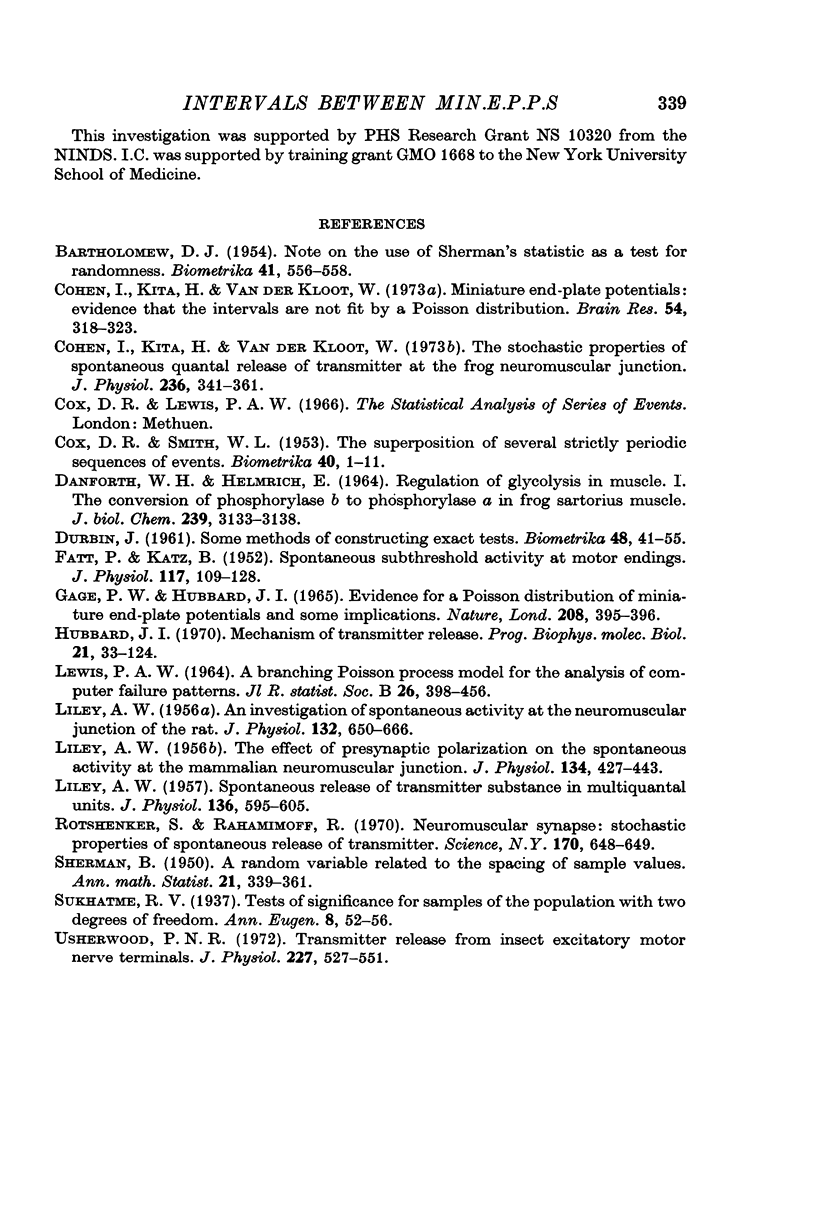
Selected References
These references are in PubMed. This may not be the complete list of references from this article.
- Cohen I., Kita H., Van Der Kloot W. The stochastic properties of spontaneous quantal release of transmitter at the frog neuromuscular junction. J Physiol. 1974 Jan;236(2):341–361. doi: 10.1113/jphysiol.1974.sp010438. [DOI] [PMC free article] [PubMed] [Google Scholar]
- Cohen I., Kita H., Van der Kloot W. Miniature end-plate potentials: evidence that the intervals are not fit by a Poisson distribution. Brain Res. 1973 May 17;54:318–323. doi: 10.1016/0006-8993(73)90054-1. [DOI] [PubMed] [Google Scholar]
- DANFORTH W. H., HELMREICH E. REGULATION OF GLYCOLYSIS IN MUSCLE. I. THE CONVERSION OF PHOSPHORYLASE BETA TO PHOSPHORYLASE ALPHA IN FROG SARTORIUS MUSCLE. J Biol Chem. 1964 Oct;239:3133–3138. [PubMed] [Google Scholar]
- FATT P., KATZ B. Spontaneous subthreshold activity at motor nerve endings. J Physiol. 1952 May;117(1):109–128. [PMC free article] [PubMed] [Google Scholar]
- Gage P. W., Hubbard J. I. Evidence for a Poisson distribution of miniature end-plate potentials and some implications. Nature. 1965 Oct 23;208(5008):395–396. doi: 10.1038/208395a0. [DOI] [PubMed] [Google Scholar]
- Hubbard J. I. Mechanism of transmitter release. Prog Biophys Mol Biol. 1970;21:33–124. [PubMed] [Google Scholar]
- LILEY A. W. An investigation of spontaneous activity at the neuromuscular junction of the rat. J Physiol. 1956 Jun 28;132(3):650–666. doi: 10.1113/jphysiol.1956.sp005555. [DOI] [PMC free article] [PubMed] [Google Scholar]
- LILEY A. W. Spontaneous release of transmitter substance in multiquantal units. J Physiol. 1957 May 23;136(3):595–605. doi: 10.1113/jphysiol.1957.sp005784. [DOI] [PMC free article] [PubMed] [Google Scholar]
- LILEY A. W. The effects of presynaptic polarization on the spontaneous activity at the mammalian neuromuscular junction. J Physiol. 1956 Nov 28;134(2):427–443. doi: 10.1113/jphysiol.1956.sp005655. [DOI] [PMC free article] [PubMed] [Google Scholar]
- Rotshenker S., Rahamimoff R. Neuromuscular synapse: stochastic properties of spontaneous release of transmitter. Science. 1970 Nov 6;170(3958):648–649. doi: 10.1126/science.170.3958.648. [DOI] [PubMed] [Google Scholar]
- Usherwood P. N. Transmitter release from insect excitatory motor nerve terminals. J Physiol. 1972 Dec;227(2):527–551. doi: 10.1113/jphysiol.1972.sp010046. [DOI] [PMC free article] [PubMed] [Google Scholar]


